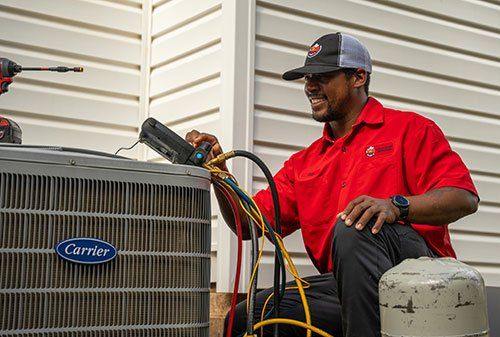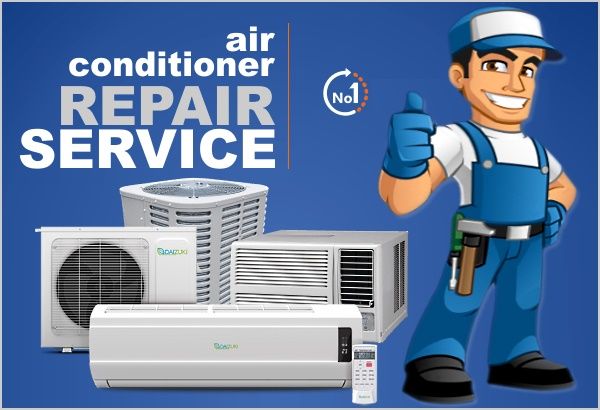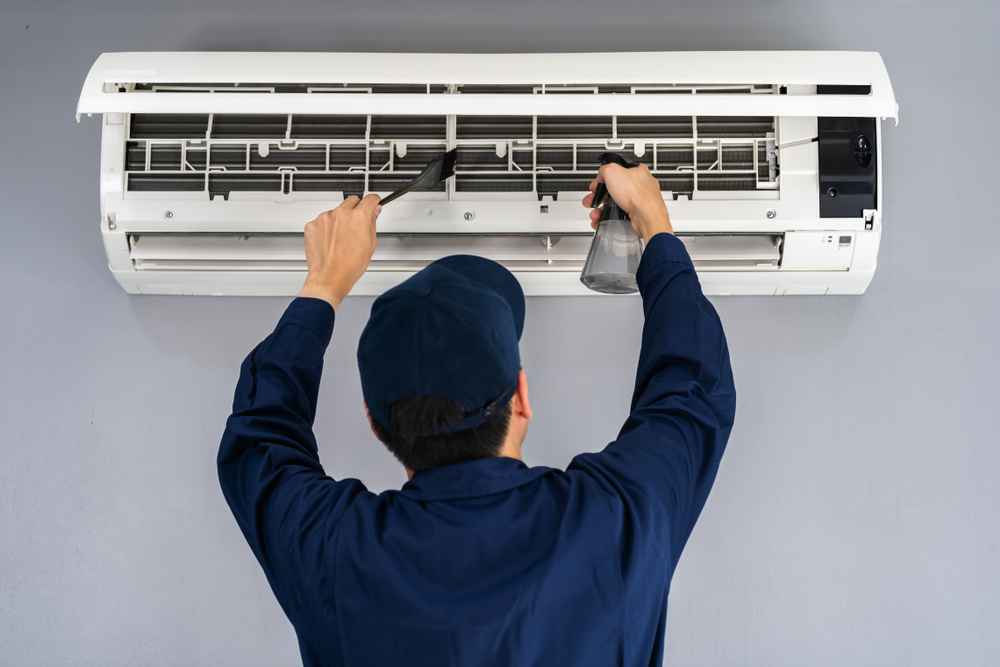Air Conditioner Repair Near Me: Efficient Climate Control Systems Are Crucial For Indoor Convenience And Energy Savings
Parts and Systems: The A/c Symphony
Ever question what really manages the environment control in your home or workplace? It's far more than simply a box humming exterior. We're talking about an advanced interplay of components, a veritable symphony of engineering developed to maintain your convenience, come rain or shine, or perhaps the most blistering heatwave. Understanding these specific parts, and how they coalesce into a unified system, is paramount for any house owner or center manager. Believe of it like a body: each organ has a crucial role, but it's their cumulative function that keeps us alive and successful.
The Core Players: What Makes it Tick?

At the heart of most residential and light commercial a/c setups, you'll discover a number of essential gamers. Do you really know what each one does? Let's break down the important cast:
- Furnace: The heating powerhouse, typically fueled by gas, lp, or electrical energy. It warms the air that then flows throughout your space.
- Air conditioning system: The cooling champion, eliminating heat and humidity from indoor air through a refrigerant cycle.
- Ductwork: The circulatory system of your HVAC, a network of channels that distributes conditioned air to numerous spaces and returns stagnant air for reconditioning. Without properly sized and sealed ducts, even the most effective system can falter.
- Thermostat: The brain of the operation, permitting you to set and preserve desired temperatures. Modern thermostats can incredible accomplishments, from Wi-Fi connection to discovering your preferences.
Beyond the Basics: Integrated Systems
While the heater and air conditioner are typically unique systems, they frequently share typical aspects, forming an integrated system. For instance, the very same blower fan within the heater frequently moves air for both cooling and heating. This smooth integration is what makes a modern a/c system so effective and easy to use. Consider the traditional scenario: a sweltering summer day paves the way to a surprisingly chilly evening. Your system, if effectively created, transitions easily from cooling to heating, guaranteeing constant comfort without you raising a finger. It's genuinely a marvel of modern comfort innovation.
Improving Air Quality: More Than Just Temperature
Beyond just warming and cooling, contemporary heating and cooling solutions frequently incorporate elements targeted at improving indoor air quality. Are you mindful of the invisible risks lurking in your air? From allergens to pollutants, an excellent system actively fights them. This can include advanced filtration systems, humidifiers to include moisture in dry environments, or dehumidifiers to draw out excess humidity. Some systems even integrate UV lights to kill airborne pathogens. It has to do with creating a holistic environment, not just a comfortable temperature level. After all, what good is convenience if the air you breathe is subpar?
Heating & Cooling Concepts: The Unseen Ballet of Convenience
Ever wonder why one space seems like a sauna while the next is an icebox, regardless of your thermostat's impassioned prayers? The answer frequently lies in a nuanced understanding of heating and cooling principles, a subtle dance of energy transfer that dictates our indoor convenience. It's not practically cranking up the a/c or stiring the heater; it has to do with handling the flow of heat, that consistent traveler always looking for stability. Believe of it like water flowing downhill-- heat always moves from warmer locations to cooler ones. This fundamental fact underpins every element of efficient a/c system operation, yet it's regularly neglected, resulting in consistent pain and, frankly, wasted energy.
The Elusive Even Temperature Level
The most common disappointment homeowners voice centers on unequal temperature levels. You change the thermostat, hoping for a blanket of convenience, only to discover one room sweltering while another shivers. Why does this take place? Typically, it's a symptom of poorly sized or poorly balanced ductwork. Think of a garden hose pipe attempting to water an entire lawn; some areas get drenched, others remain parched. If your ductwork isn't created to provide the right volume of conditioned air to each space, hot and cold spots end up being an inescapable reality. A typical error is presuming that just adding more vents will resolve the problem. In truth, it can intensify it by interfering with the fragile balance of atmospheric pressure within the system. A HVAC service technician worth their salt will perform a Manual J load computation, a detailed analysis that identifies the accurate heating and cooling requirements of each space, taking into consideration elements like window size, insulation, and even the variety of occupants. Without this foundational action, you're essentially flying blind.
Tricks of the Trade for Optimum Effectiveness
- Zoning Systems: For supreme control and efficiency, think about a zoning system. This permits you to divide your home into unique temperature zones, each with its own thermostat. No more heating or cooling empty rooms! It's like having several mini-HVAC systems tailored to your lifestyle.
- Duct Sealing: Leaking ducts are well-known energy burglars. A substantial portion of conditioned air can leave through unsealed joints and holes before it even reaches your home. Professional duct sealing with mastic or specialized tape (not just common duct tape, which fails quickly) can significantly improve performance and get rid of phantom drafts.
- Insulation's Function: Your home's insulation acts as the bouncer for heat, avoiding it from crashing the party in summer season and getting away in winter. Is your attic properly insulated? Are your walls simple sieves for thermal energy? A basic evaluation can expose substantial chances for improvement.
- Fan Settings Matter: Numerous property owners merely set their fan to "automobile." While typically fine, consider running your fan continually on a low setting, especially in shoulder seasons. This assists flow air, reducing temperature stratification and making your home feel more regularly comfortable, even if the main heating or cooling isn't actively running.

Comprehending these essential heating and cooling concepts empowers you to make educated decisions about your home's comfort and energy intake. It's not almost fixing a damaged system; it's about managing a symphony of heat and coolness, making sure every note is played perfect.
The Breath of Life: Ventilation and Air Quality
Ever walked into a space and felt that immediate stuffiness, that sense of recycled air holding on to your lungs? It's a typical experience, a subtle yet relentless pain that frequently goes unaddressed. Lots of homeowners, concentrated on cooling and heating, overlook the critical role of ventilation in their click here heating and cooling system. It's not practically temperature level; it's about the extremely air we breathe. Consider your home as a living organism; without correct airflow, it suffocates, trapping pollutants, allergens, and even stale odors. This oversight can cause a host of indoor air quality concerns, a silent foe eroding convenience and possibly affecting wellness.
Among the most significant difficulties house owners deal with in preserving superior indoor air quality centers on the accumulation of tiny air-borne particles. These unnoticeable invaders, varying from dust termites and pet dander to mold spores and volatile organic substances (VOCs) off-gassing from furniture, flow endlessly without adequate air exchange. Envision trying to clean a dusty space by simply moving the dust around; that belongs to recirculating stagnant air without introducing fresh, filtered air. This continuous re-exposure can exacerbate respiratory conditions, trigger allergic reactions, and typically reduce the sensation of a tidy, healthy home. What can be done to really clear the air?
Beyond the Basic Filter: Advanced Air Purification
While basic heater filters capture larger particles, they frequently fall short when it pertains to the genuinely minute pollutants. This is where the critical homeowner considers updating their a/c system's air filtration. Have you thought about a MERV 13 or higher filter? These pleated powerhouses can trap a considerably higher portion of air-borne particles, consisting of bacteria and even some viruses. But the journey to pristine air doesn't end there. For a really detailed approach, UV germicidal lights integrated into your ductwork offer an additional layer of defense, neutralizing air-borne pathogens as they travel through. It's like having a microscopic bouncer for your air, making sure only the cleanest molecules make it into your home. And for those with relentless smell issues or chemical sensitivities, a whole-house activated carbon filter can be a game-changer, soaking up gaseous contaminants that even the finest particulate filters miss out on. It's about proactive defense, not reactive relief.
- Check and change air filters quarterly, or more often if you have animals or allergic reactions.
- Consider a whole-house humidifier or dehumidifier to manage indoor humidity levels, which can affect mold development.
- Make sure appropriate sealing of ductwork to avoid unfiltered air from entering the system.
- Make use of exhaust fans in kitchens and restrooms to eliminate wetness and cooking odors at their source.
Did you understand that simply opening windows for a couple of minutes every day, even in winter, can dramatically enhance indoor air quality by diluting pollutants? It's a basic, affordable technique that lots of ignore. Additionally, tactically placed indoor plants, such as spider plants or peace lilies, can serve as natural air purifiers, taking in certain toxic substances from the air. While they will not change a robust ventilation system, they provide a charming, green complement to your indoor air technique. The objective is to create an environment where the air is not just comfortable in temperature, however truly invigorating to breathe.
Setup and Maintenance: The Unsung Heroes of HVAC Durability
Ever question why some heating and cooling systems purr like satisfied kittycats for years while others sputter and cough their last breath far too soon? The trick, dear reader, typically lies not in the initial purchase, however in the precise dance of installation and the diligent rhythm of maintenance. It's a tale as old as time, or a minimum of as old as a/c itself: a system, no matter how sophisticated, is only as good as its setup and subsequent care. A badly set up system can lead to a waterfall of problems, from ineffective operation that drains your wallet faster than a dripping faucet to premature component failure. Picture trying to run a marathon with uncomfortable shoes; you may end up, however not without considerable discomfort and prospective injury. Your heating and cooling system deals with comparable hardships when not effectively integrated into your home's unique thermal envelope.
Think about the airflow. A common oversight throughout installation, and one that causes untold headaches, revolves around proper ductwork sizing and sealing. It's like trying to consume a milkshake through a small, punctured straw-- you're putting in a lot of effort for extremely little reward. Small ducts restrict air flow, requiring the blower motor to work harder, taking in more energy, and reducing its life expectancy. Leaky ducts, on the other hand, resemble tossing money out the window, literally, as conditioned air escapes into unconditioned areas. Did you know that as much as 30% of a home's heating and cooling energy can be lost due to leaking ducts? It's a shocking figure, typically neglected, and quickly fixed with appropriate sealing techniques using mastic or customized metallic tape, not simply the flimsy cloth-backed duct tape everyone mistakenly calls "duct tape."
The Rites of Routine Maintenance
You have actually got a perfectly installed system. Now what? The journey doesn't end there; it simply begins a new chapter: upkeep. Think about your a/c system as a high-performance car. Would you ever avoid oil modifications or tire rotations? Obviously not, since you comprehend the long-term consequences. Similarly, neglecting your HVAC system's yearly tune-ups is a gamble you're not likely to win. These aren't just approximate consultations; they are essential preventative steps. A specialist checks refrigerant levels (the lifeblood of your system), cleans coils (those unsung heroes of heat exchange), examines electrical connections (avoiding prospective fire threats), and oils moving parts. It's throughout these sees that little issues, quickly remedied, are captured before they bloom into pricey breakdowns. An unclean evaporator coil, for circumstances, can decrease effectiveness by 5-10%, forcing your system to work more difficult to achieve the desired temperature level. It resembles attempting to breathe through a clogged nose; whatever ends up being harder.
Here are a couple of specialist insights to keep your system humming:

- Filter Finesse: Change your air filter every 1-3 months, especially if you have pets or allergic reactions. A blocked filter is a major air flow obstacle, decreasing effectiveness and putting stress on your system.
- Clear the Condensate Drain: Regularly pour a cup of distilled vinegar down your condensate drain line. This prevents algae and mold development that can obstruct the line, leading to water damage and system shutdown.
- Outdoor Unit TLC: Keep the location around your outside condenser unit clear of debris, leaves, and overgrown plant life. A foot or two of clearance on all sides guarantees proper air flow, which is critical for efficient heat dissipation.
- Thermostat Wisdom: Think about upgrading to a programmable or clever thermostat. These devices can learn your habits and optimize temperature level settings, saving energy and extending the life of your system by reducing unneeded cycling.
Remember, a little proactive effort in setup and upkeep goes a long method in guaranteeing your heating and cooling system supplies constant comfort and effectiveness for many years to come. It's not practically convenience; it's about protecting your investment and making sure comfort.